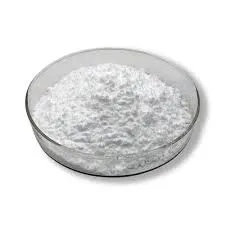
Nov . 30, 2024 19:35 Back to list
hpmc hydroxypropyl methylcellulose
The Role of Hydroxypropyl Methylcellulose (HPMC) in Modern Applications
Hydroxypropyl methylcellulose (HPMC) is a versatile cellulose derivative that has garnered significant attention and utilization across various industries due to its unique properties and functionalities. This semi-synthetic polymer is derived from natural cellulose, making it an innovative alternative for many applications, including pharmaceuticals, food, cosmetics, and construction. Understanding its characteristics, benefits, and diverse uses can provide insight into why HPMC has become a staple in modern formulations.
Properties of HPMC
HPMC is known for its thickening, gelling, and film-forming abilities. As a non-ionic polymer, it is soluble in water and can create various viscosities depending on its concentration and molecular weight. Its chemical stability at a wide range of temperatures and pH levels enhances its applicability in different environments, making it ideal for various formulations. Additionally, HPMC is odorless and tasteless, which adds to its usability, particularly in food and pharmaceutical applications.
Applications in Pharmaceuticals
One of the most prominent uses of HPMC is in the pharmaceutical industry, where it serves as an excipient in drug formulations. HPMC is often employed as a binder, film coating agent, and sustained-release agent in tablet and capsule formulations. Its capacity to control the release rate of drugs has made it a critical component in the development of sustained and controlled-release dosage forms, allowing for improved therapeutic efficacy and patient compliance. Moreover, HPMC is frequently used in ophthalmic preparations as a viscosity-enhancing agent to provide comfort and prolong the therapeutic effect of eye drops.
Role in Food Industry
The food industry has also embraced the benefits of HPMC. It is commonly used as a thickening and emulsifying agent in various food products, including sauces, dressings, and dairy products. HPMC can improve the texture and stability of these products, enhancing their overall quality. Additionally, it acts as a fat replacer in low-fat and reduced-calorie food items, allowing consumers to enjoy healthier options without compromising taste or texture. Its ability to retain moisture also contributes to extended shelf life and reduced spoilage.
hpmc hydroxypropyl methylcellulose

Applications in Cosmetics
In the cosmetics industry, HPMC is widely used as a thickening agent in creams, lotions, and gels. It imparts a desirable viscosity and stability to formulations, ensuring they are aesthetically appealing and easy to apply. HPMC’s film-forming properties allow for the creation of long-lasting makeup products and skin care formulations, providing a smooth and even application. Moreover, its ability to retain moisture makes it an effective ingredient in hydrating products, contributing to skin nourishment and overall health.
Use in Construction
Beyond its applications in food, pharmaceuticals, and cosmetics, HPMC plays a vital role in the construction industry, particularly in the formulation of adhesives, sealants, and mortars. It enhances the workability and adhesion properties of these materials, providing improved performance in both residential and commercial construction projects. The water retention capability of HPMC ensures that mortars remain workable for extended periods, which is crucial in large-scale construction applications. Furthermore, its resistance to cracking and improved mechanical properties contribute to the durability and longevity of construction materials.
Environmental Considerations and Safety
HPMC is generally regarded as safe for use in food and pharmaceuticals, with regulatory bodies such as the FDA approving its use at specified concentrations. Its biodegradable nature is an added advantage in today's environmentally conscious market, providing a more sustainable option compared to synthetic alternatives.
Conclusion
Hydroxypropyl methylcellulose stands out as a multifunctional ingredient that finds utility in a wide array of industries, from pharmaceuticals and food to cosmetics and construction. Its unique properties enable formulations that are not only effective but also safe and environmentally friendly. As industries continue to evolve and seek innovative solutions, the role of HPMC is likely to expand further, making it a cornerstone in modern product development. Understanding its various applications can lead to greater advancements in formulation science and improved consumer products across different sectors.
-
Versatile Hpmc Uses in Different Industries
NewsJun.19,2025
-
Redispersible Powder's Role in Enhancing Durability of Construction Products
NewsJun.19,2025
-
Hydroxyethyl Cellulose Applications Driving Green Industrial Processes
NewsJun.19,2025
-
Exploring Different Redispersible Polymer Powder
NewsJun.19,2025
-
Choosing the Right Mortar Bonding Agent
NewsJun.19,2025
-
Applications and Significance of China Hpmc in Modern Industries
NewsJun.19,2025







